Applied KInesiology
What is Applied Kinesiology?
Applied Kinesiology (A.K.) is method of diagnosis and treatment that is used by medical doctors, dentists, chiropractors, and other health care professionals.
A.K. doctors evaluate structural, chemical, and emotional aspects of health through the use of manual muscle testing and other standard methods of diagnosis.
AK unifies the core elements of chiropractic, acupuncture, osteopathic cranial techniques, and traditional medicine, thereby offering a more unified approach to the diagnosis and treatment of functional illness.
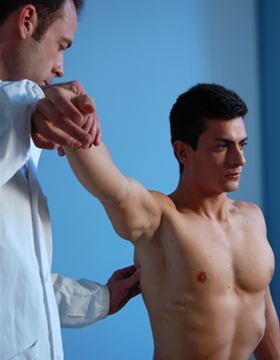
History
The History of Applied Kinesiology

Applied Kinesiology (A.K.) was founded in 1964 by Dr. George J. Goodheart (1918–2008), a chiropractor from Detroit, Michigan. While manually testing
muscle strength, he observed that some muscles tested weak without visible atrophy or injury.

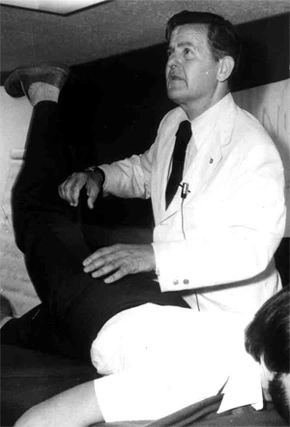
In a pivotal case, Dr. Goodheart identified nodules at the origin of a weak shoulder muscle. He applied deep finger pressure to the area, and after the nodules dissipated, the muscle tested significantly stronger. This led to the first A.K. technique: the “Origin and Insertion” treatment.
Motivated by this breakthrough, Dr. Goodheart and his colleagues developed further methods to support muscle function and enhance chiropractic results.
This period was marked by rapid innovation and discovery.

In 1973, an international group of physicians, dentists, osteopaths, and chiropractors founded the International College of Applied Kinesiology (ICAK). With chapters worldwide and annual conventions still held today, the ICAK continues to advance the scientific use and educational development of Applied Kinesiology.

Applied Kinesiology : FAQ
What Is Applied Kinesiology?
Applied Kinesiology (A.K.) is a unique diagnostic and treatment method used by chiropractors, medical doctors, and other healthcare professionals worldwide. It combines manual muscle testing with conventional diagnostic tools to evaluate body function and uncover the root causes of dysfunction.
How Does Applied Kinesiology Work?
A.K. evaluates the chemical,
structural, and mental aspects of health by combining muscle testing, postural analysis, and conventional methods. Applied Kinesiology is an open and evolving system drawing from the Chiropractic, Traditional Chinese
Medicine, Osteopathy, and Clinical Nutrition.
What Are the Origins of Applied Kinesiology?
Applied Kinesiology (A.K.) was founded in 1964 by Dr. George J. Goodheart, a chiropractor from Detroit, Michigan. While testing muscle strength, Dr.
Goodheart discovered that certain muscles weakened without apparent injury or atrophy. In a breakthrough case, he identified nodules at the origin of a weak shoulder muscle and, by applying pressure, was able to strengthen the muscle, leading to the first A.K. technique called “Origin and Insertion.”
This discovery sparked the development of further techniques to enhance muscle function and chiropractic care. In 1973, the International College of Applied Kinesiology (ICAK) was established to advance A.K.’s scientific use
and education, and it continues to serve as a hub for professionals worldwide.
What is Manual Muscle Testing (MMT)?
Manual Muscle Testing (MMT) is a diagnostic method used by Applied Kinesiologists to assess individual muscle strength, but also as way of
assessing health on a deeper level. The doctor applies gentle pressure and asks the patient to resist. A normally functioning muscle “locks” against the pressure, while a “weak” muscle—one that cannot resist—may indicate dysfunction in the muscle itself or a problem somewhere else in the body.
When a muscle tests “weak” does it indicate a need strength training?
No. This is why the word “weak” is written in quotes. Muscle testing is not assessing the raw strength of a muscle, but rather evaluating how well the nervous system is
controlling that muscle at any given moment.
Why is it important to know how the nervous system is controlling a muscle? What information can be gained by testing muscles?
When a muscle is not functioning properly, it often signals a deeper imbalance, not necessarily within the muscle itself, but in the systems regulating it.
Applied Kinesiology (A.K.) is a unique diagnostic and treatment method used by chiropractors, medical doctors, and other healthcare professionals worldwide. It combines manual muscle testing with conventional diagnostic tools to evaluate body function and uncover the root causes of dysfunction.
Each muscle is connected to a specific organ or gland, acupuncture meridian, reflex point, nutrient, nerve, tooth, and spinal segment. An imbalance in any one of these areas will often show up through muscle testing.
How is muscle testing used?
Example 1: When a patient presents with shoulder pain, the doctor may evaluate individual shoulder muscles to
determine which ones are functioning correctly and which
are not.
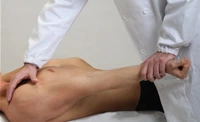
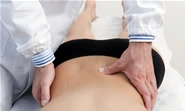
Example 2: A single muscle can serve as an indicator to assess the body’s response to specific stimuli. For instance, a muscle that initially tests strong may weaken when the doctor applies pressure to a vertebra in a particular direction. This response helps guide the doctor in determining the appropriate adjustment.
Example 3: When a patient touches a particular point or area on the body, a weak muscle may become stronger, or a strong muscle may weaken. This phenomenon, known as “therapy localization,” provides the doctor with valuable insights, such as identifying which area requires treatment or pinpointing the source of a problem, such as an inflamed tendon or a troublesome tooth.

Example 4: Strong muscles may weaken when harmful foods or vitamins are placed on the tongue, while weak muscles may strengthen when the appropriate nutrient is introduced. When combined with other clinical assessments, this provides valuable insight into which foods or vitamins may be beneficial or detrimental to the patient’s health.
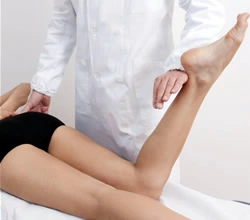
Example 5: Emotional responses can also be evaluated through muscle
testing. For instance, muscle strength may significantly change when a patient imagines specific situations, events, or people. Similarly, speaking certain words or phrases can influence the neurological control of muscles.
Example 6: Finally, muscle testing is used to assess the effectiveness of specific treatment procedures. For instance, muscles that were previously weak will typically test strong after the appropriate therapy has been administered.
Why not just rely on X-rays, blood tests, or other advanced clinical exams? Aren’t they more reliable?
In some cases, yes—but not always. Applied Kinesiology (A.K.) doesn’t
replace traditional clinical exams; instead, it complements them. Typically, clinical exams are designed to identify obvious, full-blown pathology. While
muscle testing can also detect clear pathology, its real strength lies in identifying issues before they escalate into major health problems.
For example, many people suffering from chronic headaches or back pain visit doctor after doctor, undergoing test after test, only to be told that there’s nothing wrong because the tests don’t show anything. Or worse, the tests might show something unrelated to their symptoms, but the symptoms are misattributed to those findings. This often leads to unnecessary medications and treatments that don’t address the root cause, wasting both
time and money.
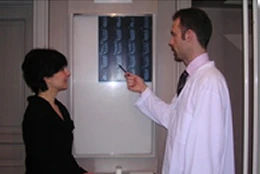
Applied Kinesiologists take a different approach, using muscle testing and other techniques to pinpoint issues directly. This allows them to identify the
underlying causes of conditions like headaches or back pain in their early stages, providing swift intervention and preventing larger, more complex
problems from developing.
Besides headaches and low back pain, are there specific examples of when A.K. is preferable to allopathic medicine?
Yes, there are numerous examples. Take hypoadrenia, for instance, a common condition that often goes undiagnosed in traditional medical practice. The adrenal glands produce adrenaline, and when a person is under
chronic stress, these glands can become depleted and begin to underperform. For an allopathic doctor, hypoadrenia only becomes a concern
when it progresses to full-blown Addison’s disease. However, an Applied
Kinesiologist (A.K.) understands that hypoadrenia has several stages, even in
its early phases.
In the initial stages of hypoadrenia, a person may simply feel fatigued or
drained all the time. If left untreated, this can evolve into more physical
symptoms, such as low back pain, knee pain, or tired feet and ankles by mid-
day. They may also experience digestive issues or lightheadedness. While all
of these symptoms are linked to depleted adrenal function, traditional medical doctors are unlikely to recognize this connection because they don’t
routinely check for adrenal insufficiency unless the patient presents with
Addison’s disease. Instead, the patient might receive treatment aimed only at alleviating localized symptoms, such as pain relief for the knees, back, or digestive system, without addressing the root cause.
An A.K. practitioner, on the other hand, would diagnose hypoadrenia in its early stages. This is possible because A.K. uses a comprehensive and structured examination process designed to detect imbalances like adrenal
depletion. By identifying the problem early, A.K. allows for timely intervention, which helps prevent the condition from advancing into more serious health issues.
How are the treatment modalities of an A.K. doctor different from those of traditional medical doctors?
If a patient visits a traditional doctor with dizziness, they will likely be prescribed medication to mask the symptoms. While this may provide temporary relief, all medications come with side effects. Additionally, by
focusing on symptom suppression, the underlying cause of the dizziness remains unresolved, which can lead to the symptoms reappearing in a more
severe form later.
In contrast, A.K. practitioners do not focus on merely alleviating symptoms. They aim to identify the root causes of their patient’s issues. For example, dizziness is often associated with imbalances in the neck—a problem that
conventional exams are unlikely to detect. However, A.K. procedures can pinpoint these structural dysfunctions.
The treatment modalities used by Applied Kinesiologists are natural, non-invasive, and focused on providing lasting solutions. Rather than masking symptoms, the goal is to correct the underlying imbalances, leading to more
sustainable health improvements without relying on medications.
What does the A.K. triangle represent?
The A.K. triangle symbolizes the balance required for optimal health, consisting of three key elements: chemical, structural, and emotional well-being. Just like a perfect triangle, health depends on maintaining equilibrium
among these aspects. If one side of the triangle is out of balance, the entire system will be affected, mirroring how an imbalance in any area of health
can disrupt overall wellness.
Is there a specific example of when all 3 aspects of the “triad of health” are involved?
A person with low back pain may have an unleveled pelvis, leading to misaligned vertebrae and a herniated disc (structural issue). This individual might also struggle with digestive disturbances
(chemical imbalance) and experience emotional stress (mental factor). Often, it’s unclear if one factor caused the others or if all three developed at the same time. For this reason, A.K. doctors assess and address all three
aspects—structural, chemical, and emotional—to provide comprehensive care.
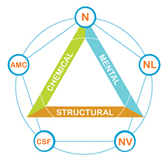
What is the educational status of an A.K. doctor?
Professional Applied Kinesiology (P.A.K.) is practiced by licensed healthcare professionals
qualified to diagnose. In the U.S., most P.A.K. practitioners are chiropractors; however, globally, practitioners come from various medical fields, including
dentistry, medicine, and osteopathy. A.K. is used as an adjunct to the primary specialty, enhancing diagnostic and treatment capabilities.
Where do health care professionals study A.K.?
Healthcare professionals study Applied Kinesiology (A.K.) in private, post-
graduate programs, with various levels of certification available. The highest level, Diplomate of the International Board of Applied Kinesiology (D.I.B.A.K.), requires a professional license to diagnose, completion of 300 hours of A.K. instruction, research contributions, and successful completion of
comprehensive exams. Certifications are governed by the International College of Applied Kinesiology (ICAK).
What is meant by the phrase “the body never lies”?
“The body never
lies” means that the body communicates its true condition through its own language, which can reveal the origins of pain and other health issues. A skilled doctor knows how to interpret this language and provide patients with the necessary care. In addition to conventional tests like laboratory, orthopedic, and neurologic evaluations, Applied Kinesiologists excel at
understanding the body’s messages through manual muscle testing, posture
and gait analysis, and other non-traditional methods.
